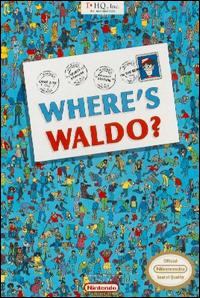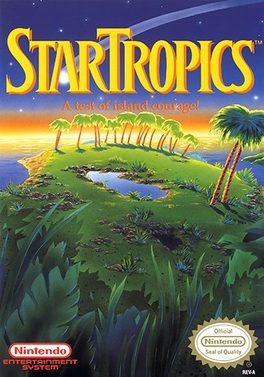stocking cap, glasses -
never ending walkabout
so, where is he now?
Additional Comments:
Well, after playing a string of solid games, I was bound to suffer some sort of abomination of the gaming world. I have to say, I've played some atrocious games over the years, but this just takes the cake, so much so that I would have to imagine that the developers are outright embarrassed over this horrible, horrible mess. And who are those developers? You've got to be kidding me - Bethesda!? For shame....
The real issue with this game is that the developers/producers should have known better. Sure, the gameplay aspect doesn't need to be fancy - simply find Waldo, point, then click - and this game does that. The problem is the artwork. Let's think back to the books and what made them so fascinating. The pictures were huge, full color drawings that managed to cram so much eye candy into small, pocketed areas while retaining an incredibly high level of detail. There was no mistaking anything, despite the pages being littered with hundreds of people, objects, gags and what have you. Even Waldo, no matter how well hidden, was still easily discernible from his surroundings. But take that idea and transfer it into a video game that can only use so many unique tiles and a maximum of what, eight colors? Forget about it. So to make up for the limitations, there's basically five or six unique, "shapely" figures while the rest of the people are just sloppily drawn stick figures. And then they're all jumbled together so haphazardly around the landscape that the whole screen looks like the remnants of a microwavable dinner explosion.
Furthermore, and this is what really got me, Waldo is not the easiest thing to find. Ok, he is once you know what you're looking for - which I admit, sounds a little strange if you happen to be thinking to yourself, I know what Waldo looks like. Oh, but you don't. Taking a look at the books again, we pretty much know there are three telltale signs to spot Waldo (five if you include blue jeans and brown shoes): his goofy striped bobble cap, those round, nerdy glasses and a red and white striped shirt. Obviously, the shirt is the most effective clue to finding Waldo with its red and white stripes. Fair enough, let's hunt down that red and white striped shirt - I'd have to imagine (or hope) my constant reiteration and conspicuous use of italics has not gone unnoticed here. Why? Because I found Waldo wearing a green and brown striped shirt in one of the stages!! What the fuck!?
*calms down*
Alright, so I played through Practice, where you're given the luxury of no timer, and fumbled my way through its two stages (seriously, I do not count the Cave as a stage, but I'll talk more about that later), trying to memorize what our stupid adventurer looks like so I can easily spot him when time becomes a factor in the latter modes. Of course, due to the color and size limitations of each pixelated character, the glasses were noticeably absent, so I had to rely solely on Waldo's striped attire and unshapely head-covering. Moving on to Easy, I located the red and white striped globetrotter in timely fashion, although various other discouraging gameplay faults hampered any sense of fun. And then we come to Medium - Train Station down, where the hell is he in the Forest stage? I spent the remainder of my time, some ten times over before I realized that the developers decided to take some liberties with the game regarding the harder modes and decided to swap Waldo's colors out. Why!? Why the fuck did they do this!? To make the game harder - bullshit!! That's nothing more than a blatant dick move. Seriously, what's the chance that someone, who has long had it ingrained in their head that Waldo wears a RED and WHITE striped shirt no matter the situation, might think: You know what? I predict Waldo has finally transcended fashion and may likely wear some butt-ugly green and brown striped shirts (or green and white shirts or whatever other random color schemes showed up in some of the latter stages).
Out of curiosity, I tried to track down an original manual to the game. Surely, there must be some sort of forewarning that the game has decided to go against everything we've ever known about Waldo. So, I found a pdf of a scanned manual, and thankfully, on page 6, the following can be found:
"In the medium and hard skill levels, Waldo always wears his characteristic striped sweater, hat and pants, but may try to fool you by changing his colors, making it extremely difficult to catch him."Um, props that the company was considerate enough to clue us in on this, but for those of us without a manual, I guess it's just tough shit. What's wrong with just sticking to the other implementations of difficulty: less time, larger stage area and smaller scope? At least none of that contradicts the Waldo namesake as we know it. Honestly, if it wasn't for Waldo sporting a red and white shirt throughout Easy, I would swear that it's nothing more than a cheap excuse to mask an inherent palette limitation. Either way, it's unjustified, and in my opinion, is a prime example of why this game is utter crap.
Moving on, let's talk about the timer. On a primordial level, I find the mechanic useless; used only to introduce a false sense of difficulty. However, I understand its function within a puzzle-based game - Pipe Dream for example - as it causes the player to remain on their toes. The thing I find odd about this game though is that the timer is constantly ticking from the moment you hit start. Normally, I don't think it'd be much of a problem, but the developers decided to include an non-interactive overworld that takes forever to play out its automated moves. You easily lose 10-20 seconds on the overworld alone between each stage. So that 10 minutes you're awarded to complete Easy, after all the overworld shenanigans are said and done, you really only have about 8 minutes to complete the game. Again, why? Who were these braindead morons left in charge to make such asinine decisions regarding this game's production? The stupidity present in this game just astounds me.
So, we have an untrustworthy adventurer who likes to change his clothing on the fly, a superfluous overworld that refuses to freeze the timer like it should and wears out its welcome almost immediately, incredibly juvenile artwork - yea, I know it's the NES, but seriously, that's no excuse - what else? Let's see: a stage that's a slot machine. That's right, a slot machine. All you have to do is get three Waldo's in a row and you win the stage. *facepalm*
And the music? Well, let me just say that I'm not even going to bother looking for links. It's annoying...let's just leave it at that.
So is that it? Eh, not quite. It seems I've forgotten to embellish my grievances of the Cave.
How to put this delicately: What the fuck kind of stage is this!?
You're presented with a pitch black room - a cave. Every now and then Waldo will quickly dart across a small fraction of the screen, his image seen for roughly a tenth of a second. The trick is to click on him and then walk him over to the exit. The only saving grace is that an incorrect click will not deplete your time like it will on the other stages. With that knowledge in hand, it's obvious that playing the stage in the ideal fashion is pointless. It's better to just randomly click all over the place until you finally gain control of Waldo. What a fucking intuitive stage. I feel sorry for anyone who actually paid money for this game back in the day. Oh, wait, I'm not done. I nearly forgot about the hourglass icon. So it plays like this: once you gain control of Waldo, two icons appear on screen. One icon is a blank, white square - this is the exit. The other is a white square with the picture of an hourglass. Instinctively, I figured this would give me more time - something that seems to be at a serious premium in this game. Nope, it immediately subtracted an entire minute from my time. What the hell kind of bullshit is that!? The one interactive object in the game hinders my gameplay experience? Again, this is an instance where the game manual would come in handy, after all, there it is on page 8:
"If you wish to gamble, take Waldo to the hourglass first. Press the A Button here and you'll either win approximately an extra minute of time, or lose one."Normally, I have no qualms about not being privy to certain information because I don't have the manual, but this is yet another instance where I have to question the intuitiveness behind the game's included features. Manual or not, I should be able to conclude what the icon will do based purely on prior gaming experiences that also use an hourglass icon. And having played countless games where an hourglass symbolizes some sort of benefit in regards to time, be it additional time or temporarily freezing time, it's natural to think this mechanic would remain constant. Therefore, it's instinctual - if you see an hourglass, you grab it. Why change a mechanic of a well known and trusted symbol? Again, like Waldo's alternately colored shirts, it's nothing but a dick move.
But hold on. According to the manual, it can add or subtract time. Ok, I suppose I can live with that, except that my first hourglass experience, like I said, killed off a precious minute's worth of time. Well, the hell with that hourglass. Why would I ever touch it again? Without prior knowledge of an either/or situation, I wouldn't. I guess I just got the short end of the stick by getting the worse of two outcomes on my first try.
Admittedly, half of my complaints could be attributed to a lack of information regarding the game, but I'd say it falls in the lap of negligence, on behalf of the developer, regarding established principles regarding both the Waldo franchise and gaming practices in general. Basically, Bethesda took a brilliant late 80s/early 90s phenomenon and seriously just fucked it up.
Rating: 0.5 non-animated moon jumps out of 5 (or better yet, is 0 out of 5 allowed?)





